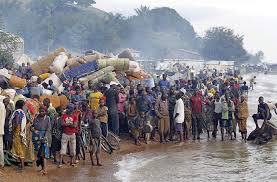
Today, the nation exercises its sovereign ritual of universal adult suffrage.
Painona with Tapiwa Nyandoro
We vote into power our lawmakers, local and central government. Thereafter, with the grace of the Almighty, we hope they will deliver us from poverty.
The challenge to the incoming government is to complete the land reform programme, and concurrently grow the economy. That way wealth may be created and accumulated for measured and strategic re-distribution as the economy grows.
“The key is to break through the tendency in Washington to just bounce from crisis to crisis. We need a long-term American strategy based on steady, persistent effort to reverse the forces that have conspired against the middle class for decades,” so said American President Barack Obama speaking at a rally recently.
Replace Washington with Harare and America with Zimbabwe, and the statement identifies the task at hand for our incoming government. We need to see our middle class walk proud and tall again.
The task at hand is formidable. With recent surveys showing that 81% of Zimbabweans live in poverty, the gravity of the situation is self-evident. “Trapping the majority of Zimbabwe’s 12 million people in poverty is lack of quality employment and (very) low Total (factor) Productivity”, concluded a recent editorial in a local weekly hitting the nail on the head. In our productive businesses, there is need for both massive productivity and output increase to create sustainable enterprises and the quality jobs that go with that.
The nation needs to abandon the traditional Western “hands-off industry” public management approach, and borrow tactics that East Asian Tigers and large successful corporations deploy. From the corporate front, three rules have emerged after evidence based analysis. These are:
- Chamisa under fire over US$120K donation
- Mavhunga puts DeMbare into Chibuku quarterfinals
- Pension funds bet on Cabora Bassa oilfields
- Councils defy govt fire tender directive
Keep Reading
A higher quality product or service is better than poorer quality and cheaper one. After recurrent losses the French Auto maker Peugeot Citroen group has decided to abandon the mass market and move its products up market.
Toyota is following BMW and others by doing the same. Our beef, cotton, textile and leather industries should follow the same example, as should our tourism, education and healthcare services sectors. “Companies”, it is said, “are more likely to succeed in the long run if they compete on quality or performance than on price”. Local Lake Harvest’s bream exports confirm the observation.
Raising revenue should take priority over cost reduction. Empirical evidence have shown that companies (and countries) have more to gain in the long run from driving up revenue (exports) — for example by charging higher prices or appealing to more customers — than by driving down costs.
Finding a profitable niche and protecting it so as to avoid competing on price. This is the most difficult task of the three. Zimbabwe’s pleasant climate cannot be replicated and should offer a comparative advantage in the service, tourism and agricultural sectors.
In addition to taking note of how corporate strategy has driven sustainable corporate growth, the nation’s incoming leaders need to go through Joe Studwell’s new book titled “How Asia Works”. Studwell’s recipe for economic growth for emerging markets as observed from East Asian countries also has three rules as follows:
Land Reform: As in our case the process began with the ousting of feudal landlords, with estates broken up and divided among small farmers, such as our AI ones.
The small farmers received cheap credits and valuable advice. These small farmers soak up huge amounts of labour which is a good thing; according to the Author as countries like ours have labour in abundance. The tobacco sector is showing this to be true.
The trick, however, is to use the latest technologies to boost productivity per hectare to the highest possible levels and ensure that Total Factor Productivity ensures minimal additional costs in the supply of all inputs and distribution channels, including that to export markets.
A successful land reform programme, with significantly enhanced outputs at competitive prices, then creates room for the next step:
export-led manufacturing. Studwell is not shy to state that the State must nurse manufacturers, through their infancy, helping them to learn how to stand on their own feet. As The Economist puts it, “this nurture must be combined with discipline: the State must oblige firms to export, with foreign sales an external test of their progress, allowing the State to cull losers”.
The final rule is the provision of cheap capital to the manufacturing (and mining) sector during the sector’s age of education. Japan (140 years ago), South Korea, Taiwan (from the 1950s) and China over the last three decades have all used financial repression to drive their export-led manufacturing sectors.
Captive savers, hedged in by capital controls were ripped off by banks who paid low interests on deposits allowing the banks to subsidise industrial firms through their years of “education” and acquiring global critical mass.
This rule shows that the US dollar or a Gold backed currency may be an albatross on the national economy’s neck.
Whilst the above rules have been useful to date, Southern Africa may need more due to its late entry to the race. Full regional integration in addition to some of the above may be the masterstroke.
Total Factor Productivity requires a stable legal and regulatory background and large markets to ensure economies of scale, besides the absence of corruption.











